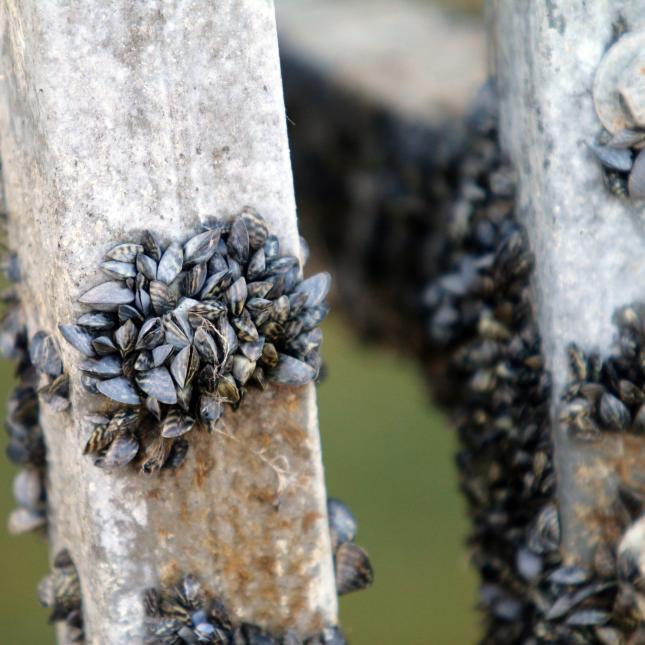June 2024: Invasive freshwater mussel monitoring ramping up in Washington waters
Potential threat
Where introduced, zebra mussels threaten native fish and wildlife by consuming available food and smothering native species. They clog power plant and other water intakes, costing taxpayers millions of dollars.
In March of 2021 zebra mussels were first detected on Marimo moss balls in retail pet and aquarium stores throughout Washington.
In August 2024, invasive mussels were again detected in aquarium moss balls, this time at a Washington wholesale aquarium business. WDFW asks anyone who purchased moss balls from any retailer over the past year to inspect the plants for invasive zebra mussels.
How you can help
WDFW has initiated volunteer monitoring programs in several lakes, and along the Columbia and Snake rivers, and requires that out-of-state participants in fishing contests undergo boat inspections. WDFW is increasing boater education efforts, and inspections of privately hauled recreational boats being transported from out of state. It is important that recreational boaters and anglers clean their boats and equipment before moving from one waterbody to another.
Invasive species information
WDFW and the Washington Invasive Species Council recommends that anyone who thinks their aquarium may be carrying invasive mussels to report it online using the Washington Invasives app or online reporting form. It is as easy as taking a photo and submitting for an expert to review. Read the March 4, 2021 news release to learn more about the recent detection of invasive mussels in aquarium moss balls.
Description and Range
Physical description
Usually the zebra mussel is about the size of an adult fingernail, but can be as large as two inches, or as small as a sesame seed. Because the mussels can live out of water for up to a month – if they are not subjected to heat or extreme drying conditions – they may be easily transported on recreational boats. They can be on aquatic plants attached to boats or trailers, or as microscopic larvae in bilges, live wells, motor cooling systems and other water systems, or attached to the hulls, especially around trim tabs, transducers, keels or propellers
Geographic range
Zebra mussels are native to the Caspian Sea, and were introduced into the Great Lakes in the mid-1980s in ships’ ballast water. Zebra mussels have since spread to more than 30 states as well as Canada, but have not yet been found in Washington.
